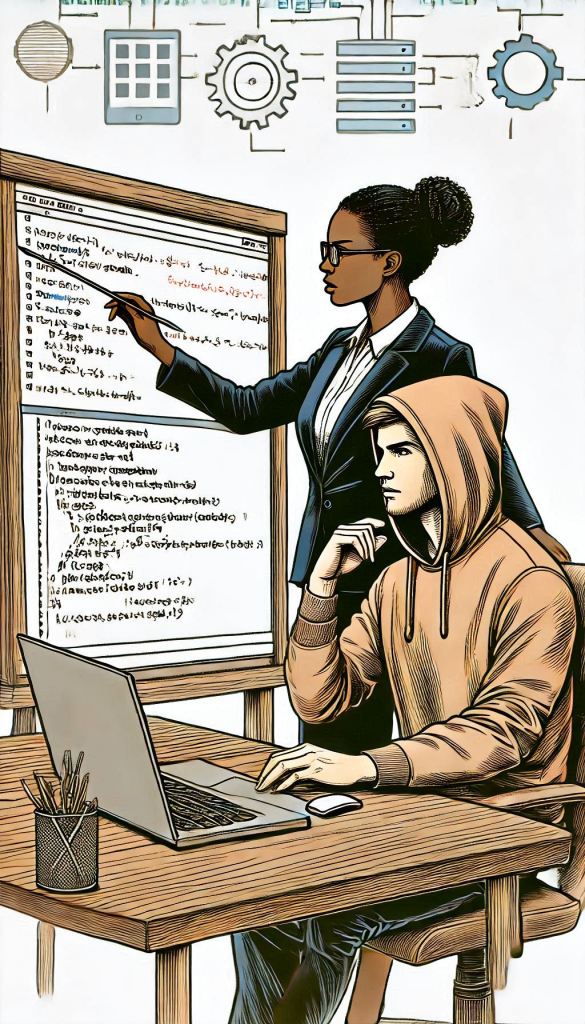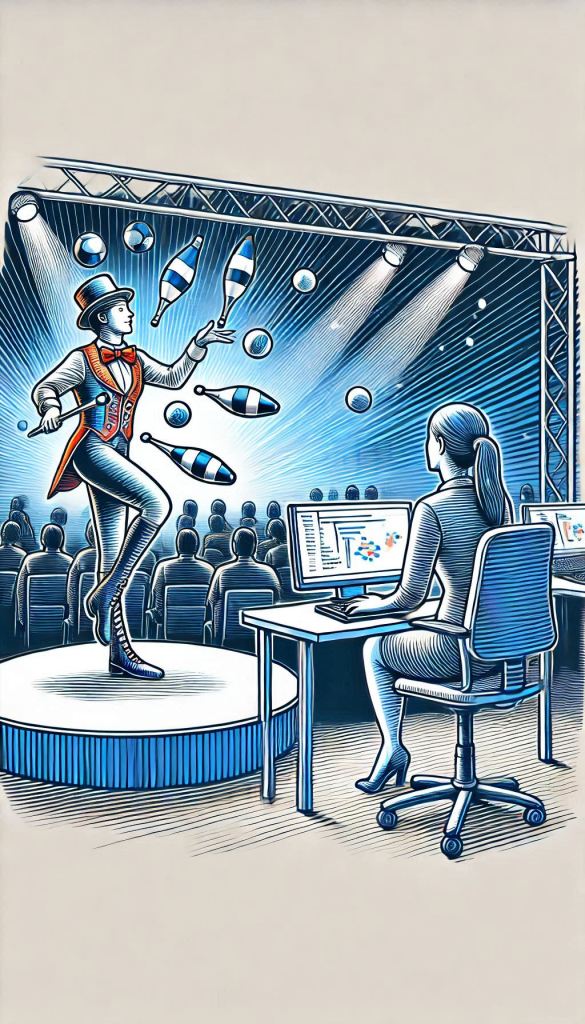
Feedback for competence or excellence?
There seems to be general agreement that feedback is important for personal development. However there seems much less agreement of how that is best managed. As leaders, we focus on feedback to help people to do better. But how should we deliver feedback to be most effective?
Some companies may focus on peer review. Others use 360 reviews. You may have quarterly appraisal meetings with your manager. Or weekly one on ones. Or omit these entirely. How should we give and receive feedback? How much, and how often?
But let’s step back.
Are we even agreed what “feedback” really is? Is it a tool for ensuring competence through “performance management”, or is it better used as a means of developing excellence?
How does an approach work like that used by Jensen Huang , CEO of Nvidia?
I don’t do 1-on-1s – I give you feedback right there in front of everybody
Jensen Huang

Feedback is not (just) teaching
Leadership is situational, as Hersey and Blanchard have been saying since the 1960s, but people still get very confused between teaching and coaching.
The general approach to feedback seems to be a teaching method based on a set of assumptions:
- People lack certain abilities
- They need to be taught the skills and techniques they are missing.
- Leaders are experts and that others lack our skills and experience.
- Therefore our role as a leader is to transfer our knowledge to others.
- They will perform as well as we do.
There is certainly a place for ensuring that people have the right factual knowledge to do the job. There is a correct sequence of activities to land an aeroplane safely. There is a right way for a nurse to give an injection safely. It is clearly important that these are not performed by untrained people.
There are many techniques for transferring factual information and these are in the general area of “teaching”. There are great tools for ensuring that teams are following good practices. Checklists are widely used in mission-critical areas such as aviation and medicine, and starting to be used for similar items such as “Definition of Done” in software.
The assumption that a manager’s role is primarily directive and ensures competence goes back to Scientific Management.
Each man receives … complete written instructions, describing in detail the task which he is to accomplish, as well as the means to be used in doing the work.
“The Principles of Scientific Management” – F.W. Taylor 1911
There is certainly a place for teaching in a leader’s toolkit. But if we focus only on teaching, feedback becomes only “performance management” – assessing if people are competent and correcting any failures.
Case study
When I joined one company, we were growing the team rapidly. However, I soon realised that no-one had ever received any training in interviewing. There are specific legal requirements and also good practices, an individual interviewed a disabled applicant and felt very uncomfortable about not knowing good practices. As the leader, with interviewing experience, I created some training on legal requirements, good practices and avoiding unconscious bias. Here I was taking a “teaching” stance to ensure basic competence and compliance in the team.
Competence vs Excellence
Feedback, however, can be far more than this. It can be about developing excellence.
Feedback is the breakfast of champions
Ken Blanchard
But to use feedback to develop excellence, we need to take a different approach to feedback.
This is similar what the Agile Manifesto is saying with its paired values. If you recall the Manifesto, the values come in pairs. The Manifesto says:
while there is value in the items on the right, we value the items on the left more
The Agile Manifesto
The items on the right (such as “processes and tools”) primarily have value in creating competence. They are important, teachable and need to be in place from the start.
The items on the left (such as “individuals and interactions”) scale towards excellence. But they cannot be taught as easily. Feedback is a key tool to helping people develop excellence.
Source of truth
The traditional “directive” approach to feedback assumes that individuals are less aware of their weaknesses than others. Therefore, the best way to help you is to show you what you cannot see for yourself.
That requires an assumption that successful performance is common to all. That it can be described and defined. And that once defined, it can be transferred from one person to another.
This is part of a more general bias in management towards reductionism. This is the assumption that a predictive solution to a large problem can be found by breaking it into small predictable parts, solving these and combining them.
Scientific Management again.
However, central to Agile principles is the idea of complexity – solving problems which cannot easily be decomposed and analysed. The whole is greater than the sum of the parts and interactions mean that the small solutions cannot be combined to solve the larger problem. And there are few problems more complex than leading and developing people.

Individual learning
If successful performance is not a “recipe” then copying another individual is not the answer past developing the basics.
This means that telling people how they are performing differently from you will not get them to be excellent. It is arrogantly basing performance on my experience, not their experience.
For an individual to develop to excellence they need to be able to understand what they need to do themselves, not to copy what you are doing.
The medical profession ask you to rate post-operative pain on a scale of one to ten. Despite being experts, they do not decide your pain themselves. Your “five” is a five, and it is meaningless for someone else to announce it is really a three.

Good practices
As a leader, your key role is not to tell people the answers, but to identify excellence when it occurs. When this happens, highlight it to the team member who created the outcome. Take time out from the flow of work and focus for a minute on giving feedback that the action was effective.
If excellence is an outcome, then as a manager you need to take note of the outcomes. Identify when you observe those moments of excellence. A sales pitch hits the mark, a project is restored to stability, a change is smoothly adopted, or a dissatisfied customer calms down.
You help your team member recognize what excellence looks like. Not what you would do, but what she actually did, so she can identify and replicate these actions.
Describe what you saw happen, not what you think she did, with phrases such as
- “This is what that made me think”
- “When you did x, I felt y”
- “Here is what worked for me”.
You need to focus time on identification of excellence and playing this back at the first opportunity. Straight after the meeting, not at a six month performance review. Because only the individual themselves knows how they perceive what they did to achieve that result. And they will only be able to visualise it if they immediately see what worked.
We can see how Jensen Huang’s approach works. Instant reinforcing feedback is a great method for developing excellence. Of course, doing this in a public forum as he does means having a high psychological safety level and may not be the place to start for everyone…









Leave a Reply